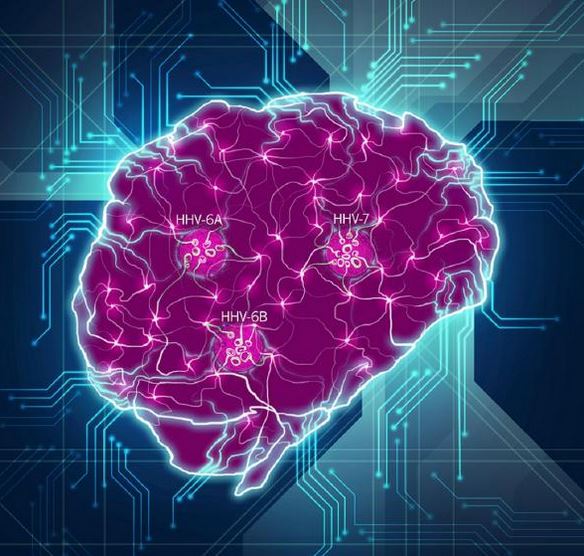Researchers who examined brain samples from three different brain banks found that two strains of human herpesvirus were twice as high in people with Alzheimer's disease compared with those who didn't have the disease.
Though since the 1980s viruses have been suspected as having a role to play in the development of the disease, the new evidence is the strongest yet, according to the study published yesterday in Neuron.
Findings surprised research team
In the extensive multicenter study that involved sophisticated "big data" genetic analysis, researchers, didn't expect to find a possible role for human herpesvirus 6A (HHV-6A) and human herpesvirus 7 HHV-7), which are known to cause encephalitis and other chronic conditions.
Initially, they were looking for drugs that could be repurposed to treat Alzheimer's patients.
Joel Dudley, PhD, co-senior author and a geneticist at Ichan School of Medicine at Mount Sinai and a member of Arizona State University's (ASU's) Banner Neurodegenerative Disease Research Center (NDRC), said in news release from Cell Press, the journal's publisher, "The title of the talk that I usually give is, 'I Went Looking for Drug Targets and All I Found Were These Lousy Viruses.'"
"We didn't set out to find what we found. Not even close," he said.
The study involved several groups that are part of the National Institutes of Health (NIH) Accelerating Medicines Partnership-Alzheimer's Disease (AMP-AD) consortium. Suzana Petanceska, PhD, who leads the AMP-AD project that supported the study, said in an NIH press release that the robust findings wouldn't have been possible without the program's open science data resources, especially the raw genomic data.
"This is a great example of the power of open science to accelerate discovery and replication research," she said.
Virus interactions with Alzheimer's genes
Using DNA and RNA sequencing data from 622 brain donors who had clinical disease and 322 who did not, the groups looked for inherited genes and those that are preferentially turned on or off in the brains of people with Alzheimer's disease. During their investigation, they found multiple clues that certain herpesvirus species may contribute to the development of the disease.
They also looked for viral clues in six brain regions known to be highly vulnerable to the effects of Alzheimer's disease, where damage can occur decades before clinical diagnosis. The researchers found higher levels of HHV-6A and HHV-7 in Alzheimer's patient brain samples compared with brains unaffected by Alzheimer's.
Ben Readhead, MBBS, lead author of the study and assistant research professor at ASU's NDRC, said in an ASU press release, "We were able to use a range of network biology approaches to tease apart how these viruses may be interacting with human genes we know are relevant to Alzheimer's."
When the in vestigators compared large viral RNA and DNA datasets with networks of human genes associated with Alzheimer's, they saw what may be the first hints of a viral mechanism that could trigger or worsen the disease.
vestigators compared large viral RNA and DNA datasets with networks of human genes associated with Alzheimer's, they saw what may be the first hints of a viral mechanism that could trigger or worsen the disease.
They observed that HHV-6A regulated the expression of several Alzheimer's disease risk genes and those known to regulate the processing of amyloids, which form characteristic plaques in the brain. They noted that most people are exposed to the two herpesvirus types—which probably enter the body through the nasopharyngeal lining—in early life, and that higher abundance in the brains might trigger an immune cascade that prompts deterioration, cell death, or other mechanisms that lead to Alzheimer's disease. (Illustration above courtesy of Cell Press.)
Herpesviruses: Participants or evil opportunists?
Exploring the significance of viruses in the brain is still at its early stages, and a key question is whether pathogens play an active role in causing disease or are opportunistic, taking advantage of neural deterioration.
Dudley said earlier studies of viruses and Alzheimer's were indirect and correlative, but computational analysis using multiple levels of genetic information from affected brain tissue allowed the group to identify direct interaction with or coregulation of known Alzheimer's genes.
"I don't think we can answer whether herpesviruses are a primary cause of Alzheimer's disease. But what's clear is that they're perturbing and participating in networks that directly underlie Alzheimer's pathophysiology," he said in the ASU release.
See also:
Jun 21 Neuron abstract
Jun 21 Cell Press news release
Jun 21 NIH press release
Jun 21 ASU press release





















